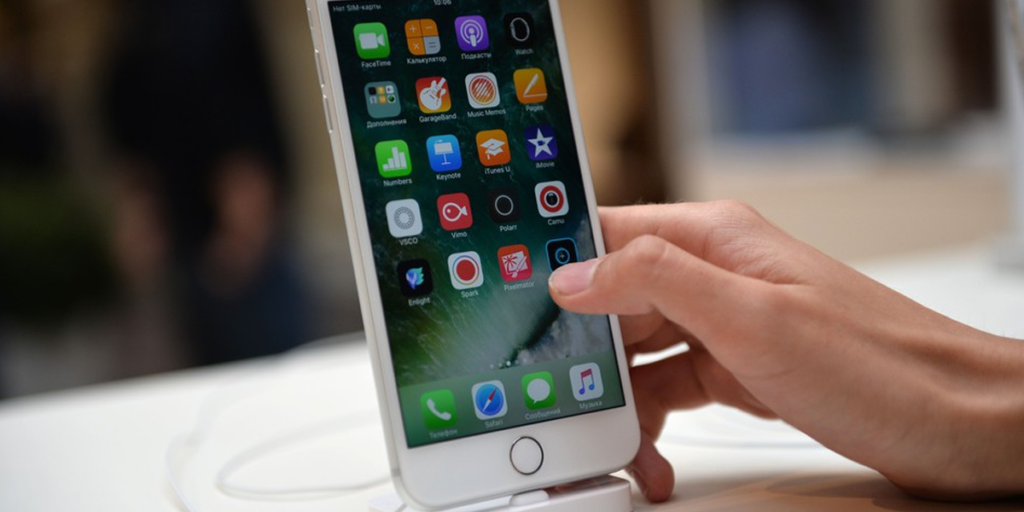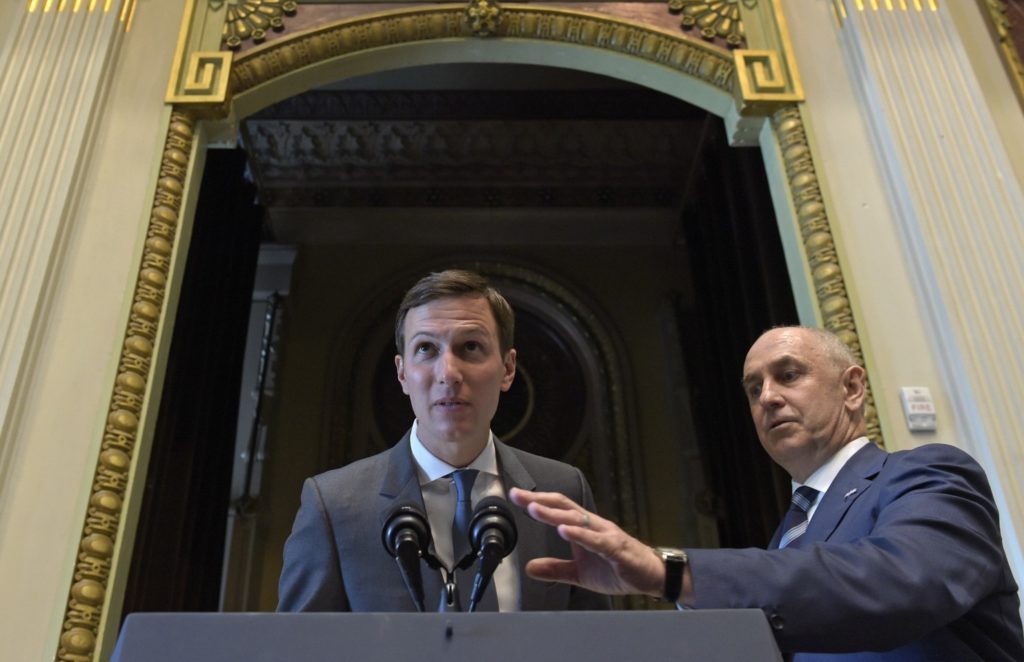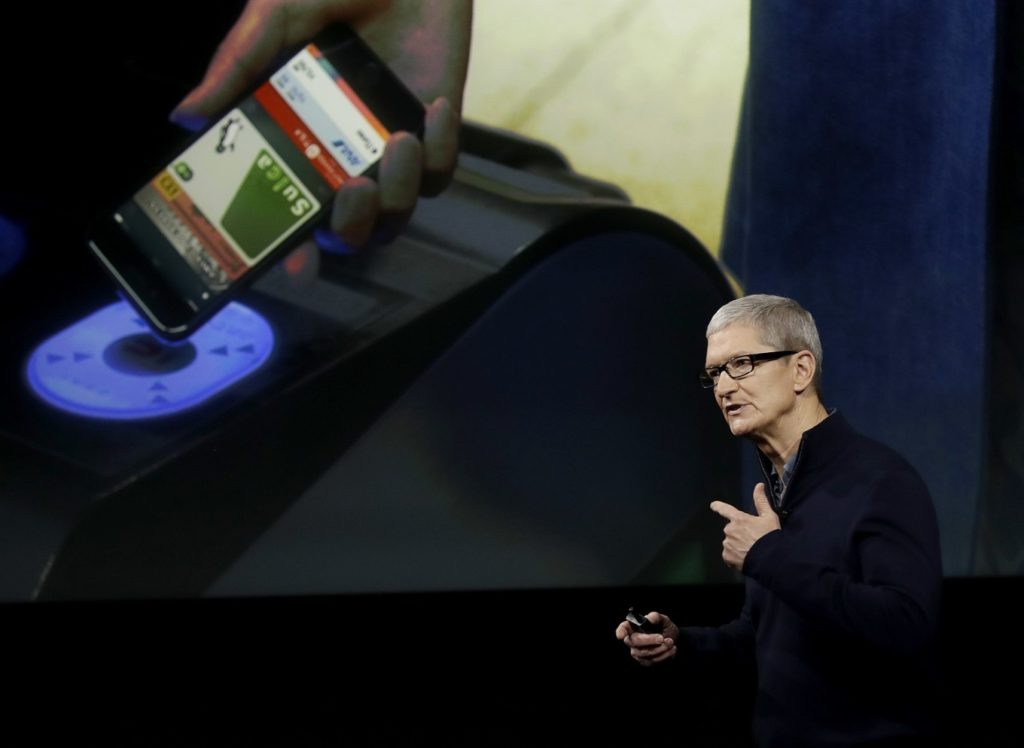Kay Ivey encourages tech savvy students to participate in her App Challenge

Governor Kay Ivey is encouraging tech savvy students from every corner of the state to participate in her App Challenge — a statewide contest that encourages students K-12 to build their own app technology and put it into practice. The goal of the Challenge is to give more students the opportunity to gain recognition for their mastery and application of computer programming and design. “Since establishing my Advisory Council for Computer Science Education last year, we have been hard at work to make my vision of giving every Alabama student a 21st Century education into a reality. I’m encouraging students to become a part of this emerging technology economy and participate in the Governor’s App Challenge,” Ivey said. “This contest allows students from every corner of the state to get creative and build their own app while putting into practice computer science principles they are learning in the classroom.” New details about the Challenge On Monday Ivey announced new details of the challenge, which she launched in March at the inaugural Alabama Computer Science Summit. Students will create an application in a language of their choosing, respond in writing to specific prompts about the application and submit a video of their application running. Student submissions will be judged in one of three grade bands: Elementary: K-5 Middle School: 6-8 High School: 9-12 Apps will be judged at various levels, with only the winning entry in each grade band advancing to the next level. The first level of competition will be at the individual school. The winner(s) from each school will advance to the Local Education Agency (LEA) level. The winner(s) from the LEA level will advance to the State Board of Education district level and the winners from each of the State School Board districts will enter the state championship. The State School Board district winners will compete at the Alabama Computer Science Summit in April 2019, with winners announced at the conclusion of the summit. Participants must register by November 1, 2018. Watch Ivey’s announcement of the App Challenge below:
Birmingham launching Bronze Valley initiative aimed at diversifying tech economy

Birmingham is looking to diversify its technology economy through the Bronze Valley initiative that focuses on innovation, diversity and growth. Non-profit Bronze Valley Corp. has identified those as the cornerstones of the next generation of great American cities. “We will be a catalyst for change,” Bronze Valley Executive Director Neill Wright said. A new organization established late in 2017, Bronze Valley is working to create an education-to opportunity-to-outcome pipeline for communities that are underrepresented in technology careers, as entrepreneurs and in other fields where innovators will lead the way in creating the jobs of the future. Bronze Valley launches Wednesday and will provide a rallying point for communities looking to emerge from this era of change as places where potential – both economic and human – becomes reality. The largest city in Alabama and the state’s financial center, Birmingham is situated at the hub of an emerging network of innovation, diversity and growth that spans the Southeast. Building on existing assets while nurturing new ones, Birmingham is positioned to anchor the development of an ecosystem in which technology-based businesses thrive – and where economic opportunity and cultural progress are expanded as part of a strategic, comprehensive, collaborative approach. A veteran of 25 years in banking and finance, Wright said that while Birmingham and Alabama have progressed economically and otherwise, “We can do better.” Attracting capital to support minority- and female-owned startups – and providing mentorship for entrepreneurs – is only part of the picture, he adds. Bronze Valley will bring “innovation, ideas and concentrated thought” to technology-based business development, becoming “a force for improving lives in the community as a whole.” With that in mind, Bronze Valley has a dual mission: generating transformative, sustainable growth expanding the breadth and depth of economic opportunity in Birmingham, throughout Alabama and across the Southeast. “There is a need,” Wright said. “And there is an opportunity to meet that need. As business leaders, we have an obligation to enhance and improve our ecosystem for growth. We can fulfill that obligation by creating an entrepreneurial environment that is more nurturing, more supportive and more inclusive. Bronze Valley is the perfect vehicle for that.” Bronze Valley’s official public launch is Feb. 14 with an invitation-only inaugural conference in Birmingham that will bring together corporate executives, elected officials, entrepreneurs, venture capitalists, policymakers and thought leaders from across the country. The conference will consider long-term solutions for the barriers to diversity that have prevailed in America’s tech growth centers – including the well-publicized diversity struggles of Silicon Valley. Incorporating the commitment to diversity into its economic development strategy is part of what the founders and supporters of Bronze Valley view as a comprehensive approach to building a robust startup culture. The success of that approach will be determined by the level of collaboration Bronze Valley can generate – and sustain – between business, government, primary and secondary education, colleges and universities, nonprofits and community organizations. The success of Bronze Valley will be tracked in real terms: jobs created; companies started, attracted and expanded; improved educational attainment; and growth in minority and female employment in technology fields. But the ultimate indicator of success, organizers say, will be a shift in the way communities think about themselves and their economic prospects, and in how they go about securing a more prosperous future. “It’s about creating and perpetuating a culture of innovation,” said John Hudson, a member of the Bronze Valley board of directors. Hudson is senior vice president of Marketing and Business Development for Alabama Power, a corporate sponsor of Bronze Valley. “Not just in Birmingham and Alabama, but throughout the Southeast, we have the momentum and we have the ingredients,” Hudson said. “With Bronze Valley, we’re putting the collaborative infrastructure in place to support transformational growth and progress.” Hudson points to disparities in the availability of funding and resources available to people of color. For instance, he notes, African-American women are the fastest-growing group of entrepreneurs in America, and yet little more than one-half of 1 percent (0.58 percent) currently obtain startup funding for their businesses or ideas. Hudson said the “culture of innovation” envisioned by Bronze Valley includes turning such disparities into opportunities and positive outcomes. Cities, states and regions that can create that kind of culture – and the individual and collective opportunities it produces – will be well-positioned to take advantage of the changes shaping the economy of the 21st century, officials said. But time is of the essence, they add. “We have to act now,” Hudson said. “This is a critical moment for us if we’re going to take full advantage of what can be accomplished through Bronze Valley. The time is ripe for this idea and the role it can play in creating opportunity, realizing potential and nurturing places where economic development and cultural progress go hand in hand to strengthen entire communities. “That’s what Bronze Valley is about, and those are the things we’re going to accomplish.” Republished with permission from the Alabama NewsCenter.
$13 million data center to be built in Huntsville

A new $13 million Edge data center is coming to Huntsville, Ala. The five-acre site will be located near the Marshall Space Flight Center and Redstone Arsenal. DC BLOX, a leading Edge data center provider announced the plans on Tuesday, with phase one of the facility expected to be completed by summer 2018. “Huntsville represents a perfect location for our next data center and aligns well with our strategy of delivering highly available data center and network services to Edge markets,” said CEO of DC BLOX, Jeff Uphues. “The design, build and operation of this data center will accommodate clients who must manage and protect confidential unclassified and classified information which are a critical segment of the Huntsville economy.” The Huntsville Edge facility will equip local businesses with the infrastructure they need to perform high-tech, defense related, manufacturing, education and healthcare jobs. “We are excited to welcome DC BLOX to Huntsville,” exclaimed Lucia Cape, senior VP of economic development for the Madison County Chamber. “Technology drives our economy, and data centers enable technology and innovation. The DC BLOX investment will improve our infrastructure and help us attract new companies and jobs to the region.” “Huntsville is one of America’s fastest-growing tech cities, seeing year-over-year tech job growth,” said Tommy Battle, Mayor of Huntsville. “DC BLOX is an excellent addition to our city. We are known for innovation, and having a data center that’s capable of keeping up with the demands of new technologies and trends puts us even further at the forefront.” DC BLOX will also be offering carrier grade network services, cloud and cloud integration services and co-location in Huntsville.
Martha Roby: Highlighting outstanding 2nd District STEM programs

Studies increasingly show that the Science, Technology, Engineering, and Mathematics (STEM) fields are the drivers of our global economy and that these disciplines are the primary source of all innovation. Reports also show that many firms desperately need STEM-skilled employees but are struggling to find qualified individuals. It has become clear that we’re simply not producing enough individuals trained in STEM fields to fulfill current demand, and that’s a big problem if we want our country to remain globally competitive. I’m proud to report that our district’s own military installations, Maxwell-Gunter Air Force Base and Fort Rucker, are taking their own measures to expose elementary school students to the STEM fields and encourage students to pursue educations in these disciplines. This past Monday I had the opportunity to visit Starbase, Maxwell Air Force Base’s five-week STEM education program, that is available to 5th graders in the River Region. Students from Montgomery, Autauga, and Elmore Counties visit Maxwell Air Force Base for classes once per week for five weeks for classroom instruction and hands-on learning experiences leading up to a final robotics project. The Starbase experience is offered to all 5th graders, regardless of learning abilities, physical challenges, and disciplinary concerns. Starbase will serve approximately 2,000 students this year alone, but due to funding limitations, schools must rotate participation from year to year, meaning that each school participates in the program approximately every other year. I’m excited to report that Congress has restored $25 million to the national Starbase program in the 2018 National Defense Authorization Act (NDAA), which went to President Trump’s desk this week. I also recently had the opportunity to meet with COL Craig Taylor, Commander of the U.S. Army Aeromedical Research Laboratory (USAARL) at Fort Rucker, and he filled me in on their program called Gains in the Education of Mathematics and Science (GEMS). GEMS is an extracurricular STEM education program that enables 4th-11th grade students from the Wiregrass region of our state to engage in grade-appropriate, hands-on experiments. These students learn valuable math and science concepts, gain exposure to laboratory settings, and interact with military and civilian technicians, scientists, and engineers. USAARL’s GEMS program aims to reach those students who are underserved or underrepresented in STEM fields. GEMS is provided at no cost to students and since 2011 has been offered to more than 950 students from Fort Rucker, Enterprise, Ozark, Daleville, Dothan, and other communities. The Wiregrass is fortunate to have GEMS available to students in the area, and I’m excited to see its continued development of STEM students for our state. It is critically important that we train up future generations of STEM professionals in order to maintain our competitive edge in innovation. Our district’s military installations are answering that call in a big way, and we are fortunate to have the Starbase and GEMS programs available to our students. I’m proud of the work being done for STEM education at Maxwell and Fort Rucker, and I am eager to see it continue and flourish. ••• Martha Roby represents Alabama’s Second Congressional District. She lives in Montgomery, Alabama with her husband Riley and their two children.
Daniel Sutter: Technology, sharing, and disaster assistance

Hurricane Harvey struck Texas last weekend with winds of 130 mph and then stalled, dumping feet of rain and causing catastrophic flooding. Thousands of people evacuated coastal and low-lying areas in advance of Harvey. Home sharing company Airbnb’s Disaster Response program is helping Harvey evacuees and victims and illustrating how technology is helping us assist our fellow citizens. Airbnb provides a platform connecting people with homes, apartments or even spare rooms with visitors looking for rental accommodations. The company does not own or manage the properties it lists, but rather serves as an intermediary between visitors and hosts. Airbnb provides background on hosts and guests, helping assure each party that the other is legitimate. The disaster program emerged spontaneously after hosts in New York allowed people displaced by Hurricane Sandy to stay for free. Airbnb formalized this for other disasters. Participating hosts offer their properties for free, and Airbnb waives its commission. Both hosts and guests still benefit from Airbnb’s assurance of trust. The Disaster Response has been activated for almost 50 different events worldwide, producing over 3,000 free rentals. These totals almost certainly understate the assistance provided by hosts, as they exclude smaller events and include only free (as opposed to discounted) rentals. Airbnb activated the Disaster Response for Harvey before landfall to assist with evacuation. Evacuating can be expensive, with lodging typically the biggest expense for people unable to stay with family or friends. The expense often deters evacuation, particularly by lower income families without significant savings. Furthermore, hourly workers lose hours and income if they evacuate, upping the cost. Imperfect hurricane forecasts can unfortunately provide an excuse to not evacuate. For every devastating storm like Harvey or Katrina, there are storms like Matthew in 2016, which threatened Florida as a major hurricane yet delivered only a glancing blow before weakening and hitting South Carolina. If evacuating would break your budget, it is tempting to hope that the next storm will also be like Matthew. By helping families afford to evacuate, Airbnb’s Disaster Response will save lives. Keep this case in mind the next time someone claims that businesses care only about profit. Airbnb hosts display Americans’ desire to help people after disasters. For example, in our research, my Johnson Center colleague Dan Smith and I found that 98 percent of the 7,000 households displaced by the 2011 Joplin tornado relocated within 25 miles. FEMA provided about 600 temporary housing units, so most of the housing need was met without government. Some victims rented vacant housing, some stayed with friends and family, and still others stayed with neighbors or families from their church. The citizens of Joplin also housed many of the thousands of volunteers and youth groups who came to help after the tornado. Although Airbnb is not doing anything completely new, extending the scope of assistance after disasters is valuable. Many Americans want to help disaster victims however they can. Some people help by retweeting requests for help made via Twitter, an activity which has been dubbed “Voluntweeting.” People willing and able to offer material assistance, however, may lack connections to victims through friends or community groups. Airbnb helps connect people wanting to help with disaster victims. As an economist who studies weather disasters, I see an important challenge for Airbnb’s Disaster Response program, one which also looms for other uses of social media to direct aid to disaster victims. Are the persons staying with the hosts truly disaster victims, or just scamming a free stay? Airbnb’s guest profiles help hosts evaluate the validity of a guest’s disaster victim claims. Perhaps this will work well. But Airbnb’s program will probably not prove sustainable if hosts get scammed too often. Technology is enabling the emergence of a sharing economy. Airbnb’s Disaster Response uses technology to expand America’s long-standing tradition of neighbors helping neighbors in time of need. Here’s hoping that it works long term, and that we can find other ways to use technology to help us help our fellow citizens. ••• Daniel Sutter is the Charles G. Koch Professor of Economics with the Manuel H. Johnson Center for Political Economy at Troy University and host of Econversations on TrojanVision. The opinions expressed in this column are the author’s and do not necessarily reflect the views of Troy University.
Blake Dowling: 2018 is coming, time to tighten up voter tech

Only in the world of politics can an election take place with both sides claiming they got the W. In college football, it’s simple; you win or you lose — unless you are a Tennessee fan, then you get to be a “champion of life.” I am sure Tennessee Coach Butch Jones meant well when he muttered those words last year, but come on man. Back to politics. The special election (Karen Handel versus Jon Ossoff) in Georgia’s 6th Congressional District this week had everyone chattering. Democrats say it was a close race in the heart of a deep-red district, meaning great things for 2018. Republicans say they won even though they were outspent 5-1. Regardless of your position, the Republican Party did “Handel” the competition. (Nice name, Karen; campaign slogans are endless.) If I were her campaign manager, we would fire up crowds with the Black Crowes’ “Hard to Handle” blasted before every event. However, one thing unheard (for once) is technology interfering with the election. Apparently, Russia doesn’t care about what goes on in Georgia. A ZDNet headline this week said this: “198 million Americans hit by ‘largest ever’ voter records leak.” Which is interesting because the potential exposure was discovered by a security expert and locked down before the information was leaked or stolen. Was this a fake news headline, pure clickbait? Here’s what went down. A company named Deep Root Analytics tracks voter information — not just names and addresses, but how the voter feels about issues — compiled using specific social engineering software (see my next column in INFLUENCE Magazine for a trip down that rabbit hole). Deep Root had a terabyte of data sitting on an Amazon server that was potentially easy to breach. That was bad. On the bright side, it was good that the breach was discovered by a white-hat hacker before that info spilled. Keep in mind, however, in states like Ohio you can already access every voter (names, addresses, etc.) in the state without needing to hack anything. So, another massive leak was avoided (maybe). Our voter tech is behind, as is everything else we are plugging into the internet without giving it much thought. This is called the “Internet of Things.” For example, on the homefront: “Good news, Mrs. Wife! I can control our air conditioning through my iPhone!” Is it password protected? No? FAIL. You just created another vulnerability making both you and your data a big target. We, as Americans, regardless of political opinion or party affiliation, must band together to put a massive defensive strategy in place to keep the really bad guys out when 2018 rolls around. Old voting machines … exposed servers in the cloud … external hard drives with unencrypted data … using free Wi-Fi without passwords … ransomware … threats are everywhere and we must “Handel” this situation with care. HAHAHA! ___ Blake Dowling is CEO of Aegis Business Technologies. His heroes are Bill Murray and Megan Fox and can be reached at dowlingb@aegisbiztech.com.
Tech CEOS visit White House to talk modernizing government

The White House on Monday urged technology CEOs to pitch in on President Donald Trump‘s effort to modernize government. “Our goal is to lead a sweeping transformation of the federal government’s technology that will deliver dramatically better services to citizens, stronger protection from cyberattacks,” said Trump, adding that the possible changes could produce up to $1 trillion in savings over 10 years. Apple CEO Tim Cook and Eric Schmidt, executive chairman of Google parent company Alphabet, were among those attending an afternoon of working groups on issues like technology infrastructure, cybersecurity and visas for foreign workers. Trump has spoken out against illegal immigration and signed an executive order banning travelers from six Muslim-majority countries, a source of tension with technology firms. “We’re working very diligently with everybody, including Congress, on immigration so that you can get the people you want in your companies,” the president said. The administration drew a mix of flattery and policy requests from the assembled technology leaders and university officials. Cook, the Apple CEO, requested that computer coding be taught in every public school. Microsoft CEO Satya Nadella said workers need more skills for a technology-based economy. Amazon founder Jeff Bezos encouraged the government to use commercial technology to save money and develop artificial intelligence to improve government services. Venture capitalist John Doerr asked for the government to open up its databases to private firms, saying it would transform health care. “If you set the data free, the entrepreneurs are going to do the rest,” he told the president. The gathering was the first event for a technology-focused effort within the White House Office of American Innovation, which seeks to overhaul government functions using ideas from the business sector. Several of the executives complimented Jared Kushner, senior adviser and son-in-law to Trump, and his wife, Ivanka Trump, the president’s daughter and a senior adviser, for helping to drive the initiative. Kushner cited some examples of the current technology infrastructure, noting the use of floppy discs in Pentagon “legacy systems.” Some technology executives have clashed with Trump over his decision to exit the Paris climate accord. Leaders at Apple and Google were among the American corporate executives who appealed to the president to stay in the pact. Nearly 100 major technology companies – including Facebook, LinkedIn and Intel – also opposed the administration’s travel ban in February. But other companies have supported aspects of the Trump agenda. IBM was prominent last week during the White House’s push for apprenticeships. Intel unveiled plans at the Oval Office in February to invest more than $7 billion in an Arizona factory, a move Trump portrayed as a win for U.S. workers. White House spokesman Sean Spicer said the administration was focusing on technology this week. He said there was “a lot of room for optimization in the federal government.” Republished with permission of The Associated Press.
Kay Ivey signs sex offender reporting bill into law

A bill to bring Alabama’s criminal code regarding sex offenders up-to-date with observed trends in sexual misconduct, particularly when technology is involved, has been signed in to law. SB301, sponsored by Mobile-Democrat Sen. Vivian Figures was signed by Gov. Kay Ivey on Friday. “The most important duty of government is to keep our people safe. I proudly signed SB301, because it protects the vulnerable in our society by ensuring that reporting requirements for sex offenders are strict and enforced,” Ivey said. “Our laws must keep up with changes in our technology.” “I am thankful for the work of Senator Figures, all legislators, and Attorney General Steve Marshall in securing bipartisan passage of this important legislation,” Ivey added. SB301 codifies a total of five new criminal offenses into law. The legislation also makes changes to the existing sex-offender laws to strengthen reporting requirements and it clarifies parts of the existing statute. “This new law is an important step forward in updating our criminal code to combat new and troubling forms of sexual misconduct, many of which are made possible by evolving technology,” Figures commented. “As sponsor of this legislation, I thank the Attorney General’s Office and the Office of Prosecution Services for their leadership in developing and promoting the proposal. I also thank Governor Ivey for signing the bill into law.”
Tech leaders couldn’t beat Donald Trump; they’ll meet him instead

Technology leaders are about to come face-to-face with President-elect Donald Trump after fiercely opposing his candidacy, fearful that he would stifle innovation, curb the hiring of computer-savvy immigrants and infringe on consumers’ digital privacy. On Wednesday, Silicon Valley luminaries and other technology leaders are headed to Trump Tower in New York to make their peace – or press their case – with Trump and his advisers. The CEOs planning to attend include Apple’s Tim Cook, Alphabet’s Larry Page, Microsoft’s Satya Nadella, Amazon’s Jeff Bezos, Intel’s Brian Krzanich, IBM’s Ginni Rometty, Oracle’s Safra Catz and Cisco Systems’ Chuck Robbins. Facebook’s chief operating officer, Sheryl Sandberg, will be on hand instead of its CEO, Mark Zuckerberg, who was one of many tech executives to express misgivings about Trump’s pledge to deport millions of immigrants. TECH VS. TRUMP It could be a prickly meeting. No other industry was more open in its contempt for Trump during the campaign. In an open letter published in July, more than 140 technology executives, entrepreneurs and venture capitalists skewered Trump as a “disaster for innovation.” And Trump’s denigration of Mexicans, his pledge to deport millions of immigrants now living in the U.S. illegally, and his crude remarks about women were widely viewed as racist, authoritarian and sexist by an industry that prides itself on its tolerance. Trump, in turn, sometimes lashed out at the industry and its leaders. He lambasted Bezos for the campaign coverage of his newspaper, The Washington Post, and suggested that Amazon could face antitrust scrutiny if he was elected. Trump also rebuked Cook for fighting a government order requiring Apple to unlock an encrypted iPhone used by a shooter in last year’s terrorist attack in San Bernardino, California. And Trump’s repeated screeds against immigrants raised fears that he might dismantle programs that have enabled tech companies to hire tens of thousands of foreign workers with the skills to write computer programs, design web pages and build mobile apps. The industry is also worried that Trump might try to undermine “net neutrality,” a regulation requiring internet service providers to offer equal access to all online services. Trump’s harsh characterization of the media as dishonest and unfair has raised other fears that he might even try to restrict free speech online. OUT OF STRIFE, PEACE? Some in Silicon Valley think the industry’s best move would be to keep its distance until Trump changes his tone. Former Google executive Chris Sacca, now a tech investor, argues that industry leaders should steer clear of the meeting altogether. Sitting down with the president-elect “would only make sense after Trump has given public assurances he won’t encourage censorship, will stop exploiting fake news, will promote net neutrality, denounce hate crimes, and embrace science,” Sacca said. “If and until then, tech figures who visit are being used to whitewash an authoritarian bully who threatens not just our industry, but our entire democracy.” Most of the companies with executives attending Wednesday’s meeting declined to comment ahead of the gathering. But Oracle’s Catz said in a statement that she plans to tell Trump “that we are with him and are here to help in any way we can. If he can reform the tax code, reduce regulation, and negotiate better trade deals, the U.S. technology community will be stronger and more competitive than ever.” Other tech institutions are also signaling an end to the animosity. The Internet Association, a trade group whose members include Google, Facebook and Amazon, praised Trump in an open letter last month for his use of Twitter and other digital tools to help him get elected. The letter also appealed to Trump’s emphasis on the economy, citing statistics estimating that the internet sector accounted for nearly $1 trillion of the country’s gross domestic product. Some conservatives say they’re actually worried that Trump might get too friendly with tech. Peter Flaherty, the president of the National Legal and Policy Center, charges that big technology companies exploited their close relationship with President Obama “to feather their nests and push for policies that benefit them at the expense of the American worker.” Trump spokeswoman Hope Hicks said by email that the president-elect “looks forward to meeting with this important group of industry leaders and true innovators.” COMMON GROUND: TAX CUTS The technology industry already supports one of Trump’s ideas. He has promised to temporarily reduce the corporate tax on foreign profits from the current 35 percent to 10 percent to give U.S. companies an incentive to bring their overseas cash back home. It’s a cut that Cook has been pushing Congress to make because Apple has $216 billion, or 91 percent of its total cash, in overseas accounts. Other tech companies in line to benefit the most from a tax reduction include Microsoft, Cisco, Microsoft and Google’s corporate parent, Alphabet. But Trump might not be doing many other favors for technology companies given his history of holding grudges against his opponents, said Larry Irving, a former government affairs executive for Hewlett-Packard who now runs a consulting firm. “Everything Trump has done so far suggests that he rewards loyalty and punishes disloyalty,” Irving said. “The tech industry better have some pontoons ready.” Republished with permission of the Associated Press.
Donald Trump is master of his domains, even ones that bash him

Whoever owns donaldtrumpsucks.com must really hate Donald Trump, right? Wrong! It’s the Donald himself. The same goes for no2trump.com, trumpmustgo.com and two dozen other web addresses that sound like they’re bashing the billionaire Republican presidential nominee, his business interests or his political aspirations. What would Trump want with such insulting domains? Easy. To make sure his critics and rivals can’t have them. He and his Trump Organization own more than 3,600 web addresses, according to the research firm DomainIQ. The vast majority bear the names of his properties, products and progeny. There are 274 domains alone featuring the name of Trump’s daughter Ivanka. And then there are the ones that seem better suited for the anti-Trump crowd: eight domains ending in “scheme,” eight ending in “fraud” and eight ending in “sucks.” It is common for businesses and celebrities to scoop up and sit on web addresses that could be used to mock or attack them. Cable giant Comcast owns ihatecomcast.com, and Verizon holds verizonsucks.com. Colleges have made a habit of buying up versions of their names ending in .xxx to prevent them from falling into the hands of pornographers, and Major League Baseball has registered the names of various teams ending in .sex. “Domains are cheap,” branding expert Rebecca Lieb said. “Mopping up when somebody acquires a domain and does something malicious with it is expensive.” Trump’s collection of web addresses good and bad is far more extensive than that of any candidate before. He and the Trump Organization own a few hundred more than Target Corp. or General Motors. Hillary Clinton‘s campaign owns 70, according to DomainIQ, though none appear to be the kind of derogatory names Trump has registered. Her family’s foundation owns 214 domains, including four ending in .xxx. “Mr. Trump has built a globally recognized, highly successful brand, and it’s only natural he would attempt to protect his name and his brand in all respects,” Trump campaign spokeswoman Hope Hicks said in an email Monday. Web addresses cost just a few bucks to register. After that, you can sell them to the highest bidder, unless someone steps in and successfully claims that the domain involves a trademark. That’s how Trump has gotten his hands on Trump-related addresses that other people registered before he could. His lawyers have sent cease-and-desist letters and gone to arbitration at least 40 times to force outsiders to hand over domains, including MelaniaTrump.com. Trump and his team didn’t take any chances in 2009 when he created the Trump Network brand to sell vitamins and other health products. They quietly scooped up 18 negative domain names, including DonaldTrumpPonziScheme.com and TrumpNetworkFraud.com. Trump also tried to head off the haters when he ventured into the liquor business with Trump Vodka in 2005. Along with trumppunch.com, trumpwithatwist.com and yourefiredvodka.com, Trump’s company registered ihatetrumpvodka.com and trumpvodkasucks.com. And last year, as his run for the White House focused new attention on Trump University’s questionable practices, Trump and his team registered trumpfraud.com and three similar domains. Trump’s roster traces his professional ambitions and personal milestones, with registrations tied to the start of big projects and the arrival of children and grandchildren, and addresses for ventures that never got off the ground or ones like trumponair.com that could be ripe for use if he loses on Nov. 8. There are domains for an unrealized plan to build a NASCAR speedway in the early 2000s, a failed attempt to acquire Gianni Versace‘s Miami Beach mansion in 2013 and an unsuccessful push to develop a North Carolina golf resort. There are domains for a Trump-produced Broadway show featuring the music of Irving Berlin. The curtain never rose, but Trump still owns trumpfollies.com. And then there are the politically themed domains that appear to coin new terminology: trumpublican.org and trumpocrat.net. Despite Trump’s efforts, some of his tormentors have beaten him to the punch. Chris Puchowicz bought trump.org for $1,272 at an auction in 2012 and snagged trump.tv for $251 a few months later. The Trump Organization didn’t make a bid, he said, but its lawyers later threatened a lawsuit. Puchowicz still owns the domains and has used them to post an anti-Trump rant. Brian Lam, a software engineering student in St. Louis, spent $9 to register votefortrumppence.com. He then posted a photo of himself giving the finger to the camera over the words “Just Kidding.” All is not lost. Trump still owns ilovedonaldtrump.com. Republished with permission of the Associated Press.
Blake Dowling: This Halloween, tech can be really scary

Technology can be scary. That said, my Halloween column focuses on some frightening examples of tech gone awry; some you might find scarier (dumb scary) than an Ernest movie. Who remembers those? AWFUL. Others are disturbing in a more realistic way. I recently noticed an email alert about a fake “blue screen of death.” An email comes in looking like it’s from Microsoft. You click on the icon that looks very close to the Microsoft Security Essentials Icon. It immediately runs malware that takes over your computer, complete with a blue screen and a phone number at the bottom to call for support. If you call the number, they remote access into your machine to “fix” the issue. But in fact, they are just liberating your data as fast as they can. Self-driving cars can certainly be scary. Imagine an automated car rolling down the highway at 85 miles per hour. And it gets hacked; a luxury item instantly weaponized. Russians and other nation-states are constantly looking for weaknesses in our technical infrastructure; this could certainly be a natural space to target once (if) this tech becomes mainstream. Opportunities to wreak havoc are endless. Ever hear of Shodan? Shodan is a search engine that allows a user — through a variety of filters — to find specific types of computers (webcams, routers, servers, etc.) connected to the internet. Scary enough. Shodan also can identify devices with weak security settings, the perfect target for criminals. It could show the user, webcams, routers, air conditioning units (as in last year’s Target hack), or any other nontraditional network entry point. Granted, Shodan was not designed as a tool for criminals, but neither was the computer. By identifying vulnerabilities, a hacker knows where to get in — the next step is how. A complex password is a move in the right direction. There are a dozen solid password management and creation tools, which can make this task easier and more secure. Check out LastPass; it is robust and very cool. What is scarier than killer robots? Nothing really. The military and police use robots for bomb disposal to avoid putting our brave men and women who serve in danger. This summer, at a peaceful demonstration in Dallas, a sniper appeared (seemingly out of nowhere) and began shooting police officers. After a long standoff, a police robot was dispatched to “terminate” the shooter. It did so with extreme force. In fact, that was done by delivering a large payload of explosives to end the situation. I am glad this happened: it ended the standoff with no additional lives lost. However, what if such a robot — with that kind of skill set — was hacked? In a more day-to-day fight; how about your phone blowing up in your pocket? Welcome to the short-lived world of the Samsung Note 7 smartphone. In the wake of multiple cases of a Note 7 emitting smoke, exploding, etc., a flight was canceled, and the plane evacuated, because of one of these bad boys. Long story short, Samsung no longer makes them anymore. Know what’s scary … really scary? Samsung has no clue what caused this to happen. It’s a frightening world out there, full of hackers, drones, AI, robots, Ernest movies, exploding phones, and all sorts of other shenanigans. I leave you with two pieces of Halloween advice: update/change/enhance your password, and don’t dress like a scary clown — you could get shot. Thankfully, I believe the world responded accordingly, and is over the spooky clown craze. Happy Halloween. ___ Blake Dowling is CEO at Aegis Business Technologies. His technology columns are published by several organizations. Contact him at dowlingb@aegisbiztech.com or at aegisbiztech.com.
How to stream the high-stakes presidential debates

Television viewership for Monday’s presidential debate is expected to be high, but you don’t need a television to watch. There are plenty of ways to stream the showdown for free and get behind-the-scenes content and commentary, ranging from emoji responses to serious fact checks. A bigger question might be: Who isn’t streaming it? If you don’t have cable or satellite TV, or even an antenna, you can catch the streams that major news organizations will offer on their websites and apps. But many social networks and online outlets will offer the debate, too. Here’s your online guide to Monday’s debate, which starts at 9 p.m. EDT. All three presidential debates are expected to have similar streaming opportunities, and many outlets will cover the one for the vice presidential candidates as well. ___ TWITTER The service will stream Bloomberg Television’s live coverage of the presidential and vice presidential debates. To watch, go to https://debates.twitter.com, or visit Bloomberg’s bpolitics Twitter feed. Twitter says the streams will include special political programming and commentary from Bloomberg 30 minutes before and after each debate. You do not need a Twitter account — or be logged in — to watch. ___ FACEBOOK ABC News will show live streams from the debate and offer footage from watch parties, anchors and correspondents. The network says it will “incorporate viewers’ comments, questions and conversations” into its Facebook Live coverage. To find it, go to the ABC News Facebook page. Other organizations are hopping on the Facebook Live bandwagon as well, including Fox News, C-SPAN, The New York Times, CNBC and Telemundo. ___ YOUTUBE Google’s video streaming site is hosting debate streams from several news outlets, including NBC News, The Washington Post, Telemundo and Fox News. In addition, Google says “your favorite YouTube creators” such as the Young Turks and Complex news will be streaming live reports from the debates, using YouTube Live directly from their phones. ___ VIRTUAL REALITY For those with virtual-reality headsets, NBC News is planning special VR streams and content for each of the debates. It will also help organize virtual watch parties. Some of the events require RSVPs. ___ BUT WAIT, THERE’S MORE! Buzzfeed is promising “running emoji commentary of the action on Facebook Live.” Snapchat, meanwhile, will cover each debate as a “Live Story” within its app. CBSN, CBS News’ digital streaming service, will feature Instagram “Stories” in its live streaming coverage. Instagram Stories lets users share photos and videos from their day; they disappear automatically after 24 hours. ___ LAST, BUT NOT LEAST Bars across the country will be showing the debates. As with past debates, there will be drinking games and debate bingo for those interested. In New York City, the blog Gothamist assembled a list of places for “watching, boozing and laughing your way through the debate.” The gay club Eastern Bloc, for example, will feature a dance party and Hillary Clinton fundraiser following the debate. Whether you’re a fan of Clinton or Donald Trump, or you’re still deciding, check Meetup, Facebook or Google to find debate-viewing events near you. Republished with permission of the Associated Press.


